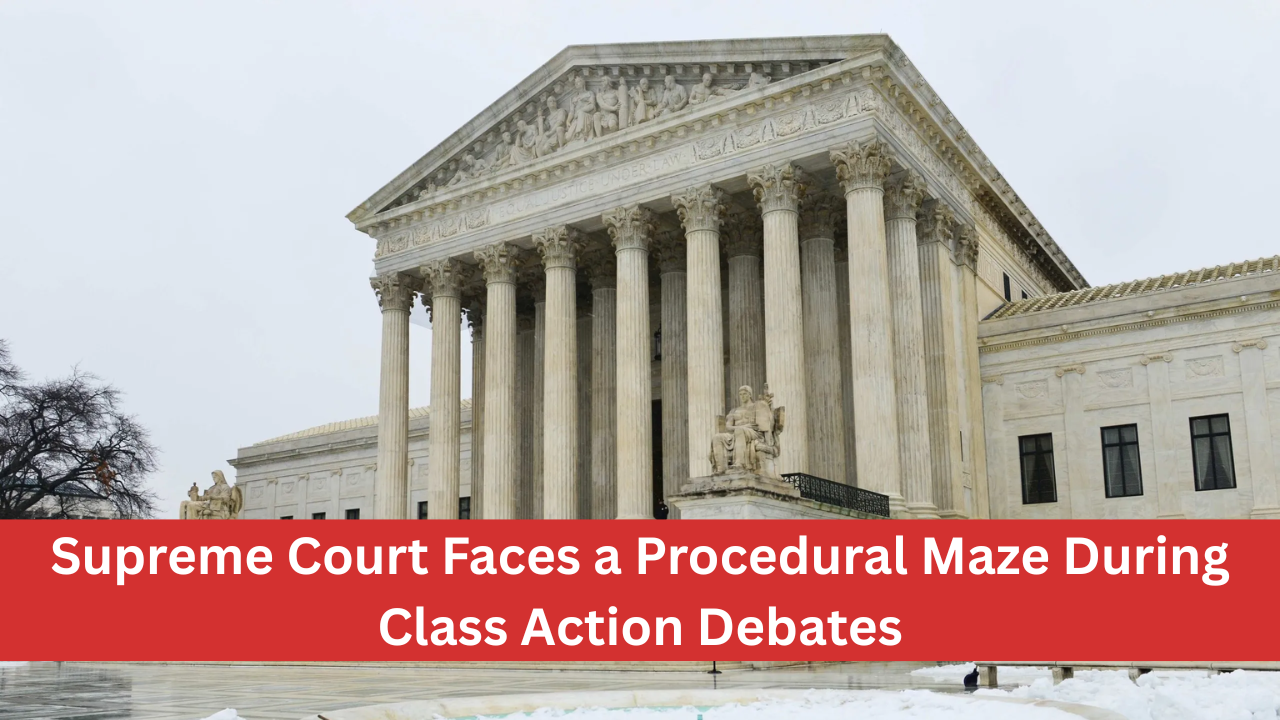The U.S. Supreme Court recently heard arguments in a major class action case involving the Laboratory Corporation of America (Labcorp).
This case was expected to bring more clarity on how courts handle class action lawsuits, especially when it comes to who can be included in a group suing a company. But instead of a clear path, the justices found themselves tangled in what many called a “procedural mess.”
The issue began when a group of blind individuals filed a lawsuit against Labcorp. They claimed that Labcorp’s self-service kiosks at its medical facilities were not accessible to them.
This, they argued, violated the Americans with Disabilities Act and a similar law in California. They wanted to sue Labcorp as a group—a class action—because many blind people might have faced the same problem.
Labcorp objected. The company said the court allowed too many people into the group, people who may never have tried to use the kiosk or been affected in any real way.
According to Labcorp, including such people goes against Article III of the U.S. Constitution. Article III says you must have an actual injury to sue in federal court. The company said the lower court made a mistake by letting people with no actual harm join the lawsuit.
Labcorp also warned that if this kind of class action is allowed, it could open the floodgates to massive lawsuits. The business community, including the powerful U.S. Chamber of Commerce, supported Labcorp.
They said class actions with uninjured members are like “legal blackmail” that force companies to settle even weak cases just to avoid the risk of huge damages.
The Supreme Court took up Labcorp’s appeal to answer one main question: Can a court approve a class action lawsuit even if some people in that group were never actually harmed?
But things got complicated during the court’s hearing. Justice Sonia Sotomayor raised a key concern. She asked if the court might be offering an “advisory opinion”—a decision on a case that doesn’t solve anything real because the facts had changed.
That’s not allowed under American law. Courts are supposed to deal with actual problems, not hypothetical ones.

Here’s where the confusion started. Back in May 2022, the district court defined the group of blind people who could sue Labcorp.
Labcorp didn’t like this definition because it only included people who had been denied service, meaning the group was defined by the outcome of the case, which courts generally avoid. Labcorp said this was a “fail-safe” class, which unfairly ties group membership to winning the case.
So the court changed the group definition in August 2022. The new version included all blind individuals who, because of their disability, were unable to use Labcorp’s kiosks.
Now, Labcorp argues that this new version includes people who weren’t harmed and shouldn’t be allowed to sue. But here’s the twist: Labcorp only filed an appeal about the original May definition, not the updated one from August.
That’s what caused the current legal mess. The plaintiffs (the blind individuals suing Labcorp) and several legal experts told the court that since the May version was replaced, Labcorp’s appeal is now pointless. You can’t appeal something that no longer exists, they said.
Their lawyer, Deepak Gupta, told the justices that Labcorp didn’t file a proper appeal of the August version. So the court should not consider the case at all. He also said there’s no special legal rule that would allow the Supreme Court to still take it up.
Justice Neil Gorsuch called the whole thing a “squirrelly complication” and asked whether the court was just giving its opinion on a case that doesn’t need solving anymore. He said if the May version is gone, then all the court can do is say that version was fine, nothing more.
Labcorp’s lawyer, Noel Francisco, disagreed. He said the case still matters because the lower court had said there was no major difference between the May and August group definitions. So, in his view, fixing the earlier mistake still solves the whole problem.
But other justices weren’t convinced. Justice Elena Kagan pointed out that the May and August definitions were different. Justice Ketanji Brown Jackson said Labcorp was partly to blame for all this confusion.
She said that after Labcorp pushed back on the first version, it can’t now complain about the second one, which came as a result of its objection. She even suggested Labcorp should be legally stopped from switching its position.
On the other hand, some conservative justices, like Chief Justice John Roberts and Justice Brett Kavanaugh, seemed more concerned about how class actions affect big companies.
They noted that when a company faces a massive lawsuit, it may feel forced to settle, even if the case is weak, just to avoid huge payouts. Roberts called this the “elephant in the room,” highlighting the pressure businesses feel under such circumstances.
So, What Happens Now?
Despite the deep arguments, the big question remains unanswered. If the court thinks Labcorp didn’t properly appeal the right version of the group definition, it may throw out the case without addressing the larger issue.
That would leave the bigger question—about who can be included in class actions—still unresolved for now.
A final decision from the Supreme Court is expected by July. Until then, lawyers and corporations across the country will be watching closely.
The case is officially titled Laboratory Corporation of America Holdings v. Davis, and is listed in court records as case number 24-304.



